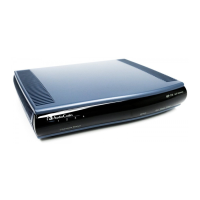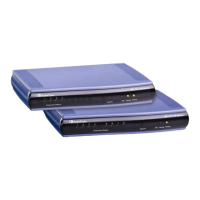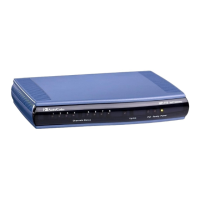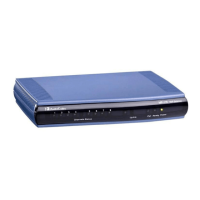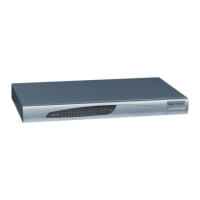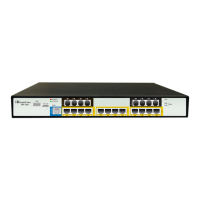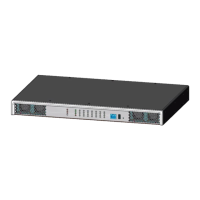SIP User's Manual 254 Document #: LTRT-65415
MediaPack Series
v=0
o=- 0 0 IN IPV4 <IPAdressA>
s=-
t=0 0
p=+1
c=IN IP4 <IPAddressA
m=audio <udpPort A> RTP/AVP 18 0
a=ptime:10
a=rtpmap:96 PCMU/8000
a=gpmd: 96 vbd=yes
In the example above, V.152 implementation is supported (using the dynamic payload type
96 and G.711 u-law as the VBD codec) as well as the voice codecs G.711 μ-law and
G.729.
Instead of using VBD transport mode, the V.152 implementation can use alternative relay
fax transport methods (e.g., fax relay over IP using T.38). The preferred V.152 transport
method is indicated by the SDP ‘pmft’ attribute. Omission of this attribute in the SDP
content means that VBD mode is the preferred transport mechanism for voice-band data.
To configure T.38 mode, use the CodersGroup parameter.
8.2.6.4 Fax Transmission behind NAT
The device supports transmission from fax machines (connected to the device) located
inside (behind) a Network Address Translation (NAT). Generally, the firewall blocks T.38
(and other) packets received from the WAN, unless the device behind the NAT sends at
least one IP packet from the LAN to the WAN through the firewall. If the firewall blocks T.38
packets sent from the termination IP fax, the fax fails.
To overcome this, the device sends No-Op (“no-signal”) packets to open a pinhole in the
NAT for the answering fax machine. The originating fax does not wait for an answer, but
immediately starts sending T.38 packets to the terminating fax machine.
This feature is enabled using the T38FaxSessionImmediateStart parameter. The No-Op
packets are enabled using the NoOpEnable and NoOpInterval parameters.
8.2.7 Working with Supplementary Services
The device supports the following supplementary services:
Call Hold and Retrieve (see ''Call Hold and Retrieve'' on page 255)
Call Pickup
(see Call Pickup on page 257)
Con
sultation (see Consultation Feature on page 257)
Call Tran
sfer (see ''Call Transfer'' on page 258)
Call Fo
rward (see ''Call Forward'' on page 259)
Call Waiting (see
Call Waiting on page 261)
Messag
e Waiting Indication (see ''Message Waiting Indication'' on page 262)
Calle
r ID (see Caller ID on page 262)
Thre
e-way conferencing (see Three-Way Conferencing on page 265)
Multilevel Pre
cedence and Preemption (see ''Multilevel Precedence and Preemption''
on page 266)

